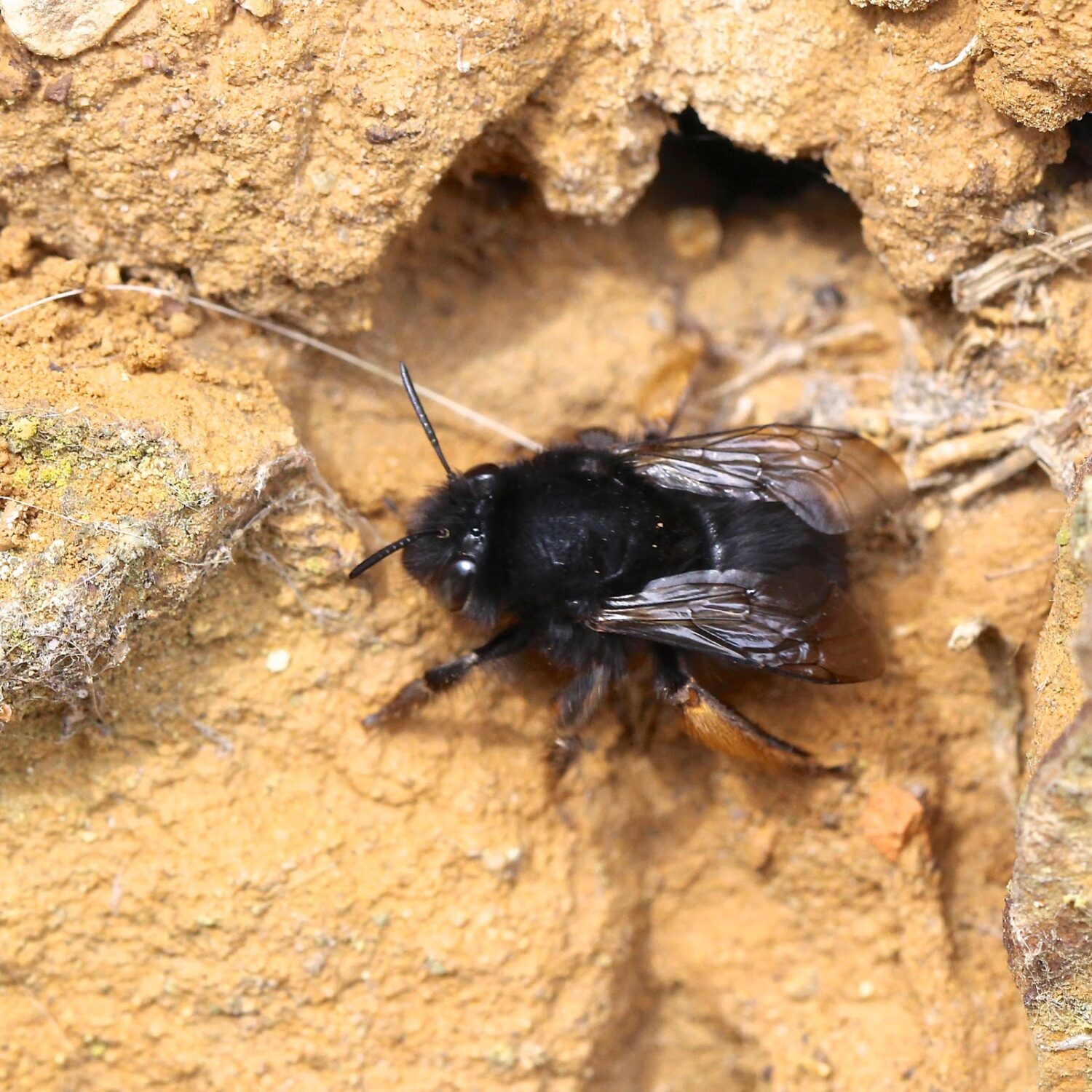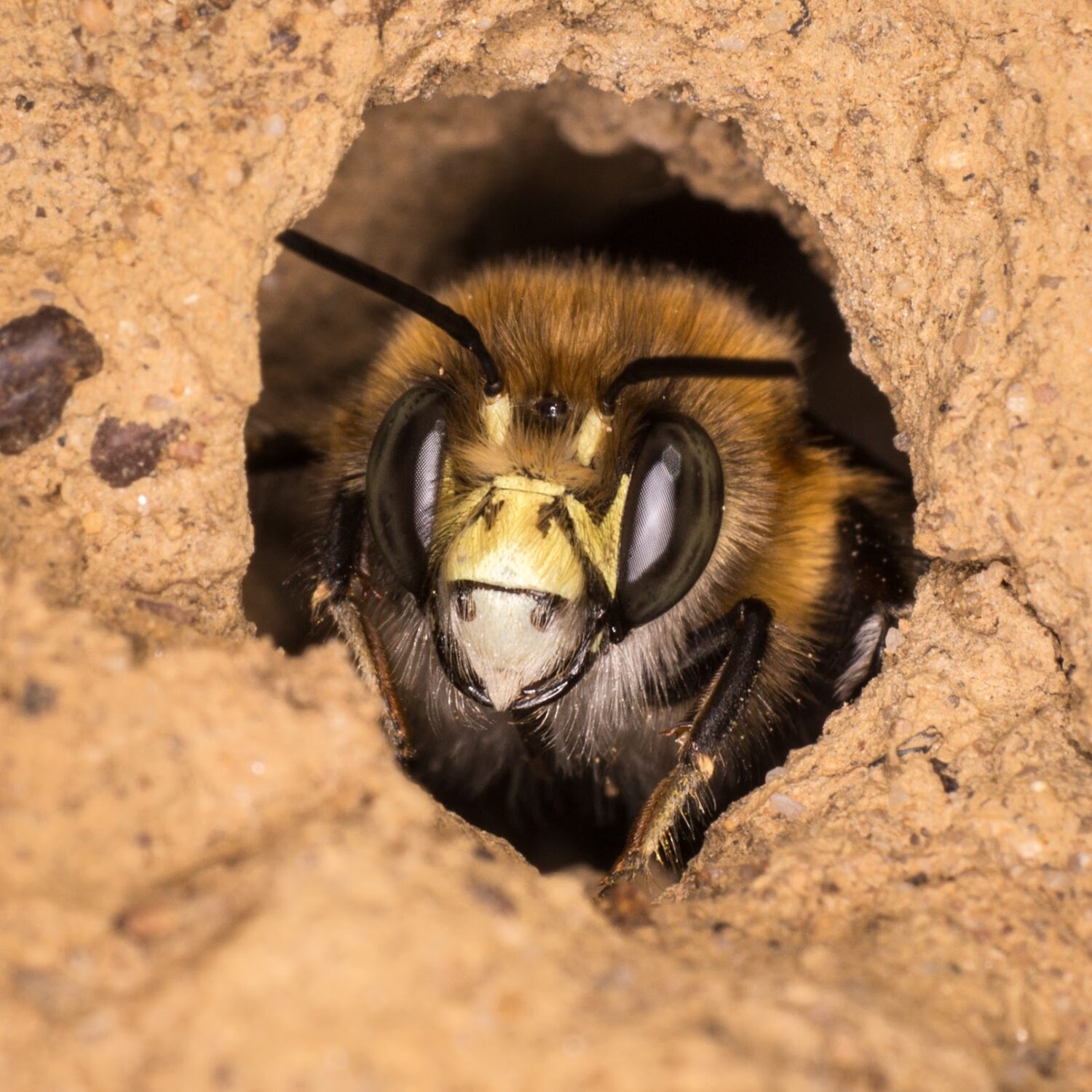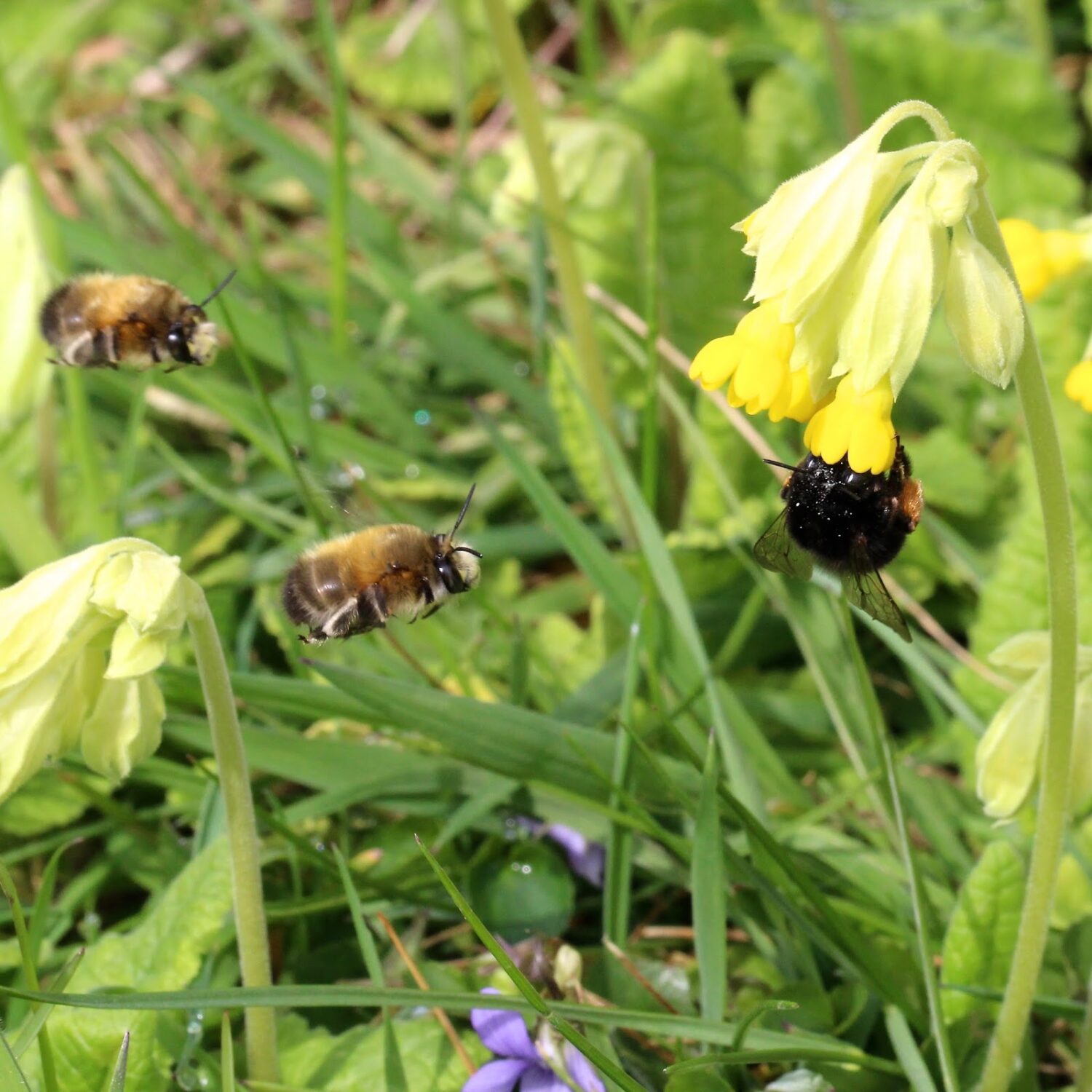Can you help track the changing distribution of the rare Hairy-footed Flower Bee in the North East?
The Hairy-footed Flower Bee is a solitary bee rarely recorded in the North East. Records are clustered around the Alnwick area in North Northumberland with no records from South Northumberland or County Durham. It is fantastic to see that this bee was sighted by participants of the North East Bee Hunt in 2020. Bee Hunt records in 2020 revealed new areas for this bee, with records from Felton and Howick. If you live in Northumberland, you may spot this bumblebee lookalike in your gardens, allotments and green spaces this spring.
Identification
This solitary bee is often mistaken for a bumblebee as both are furry and plump bees. Females are black-furred with a bright orange brush of hairs on their hind legs that are used to carry pollen.
In contrast, males are gingery and have a yellow ‘mask’ on their face. A distinctive feature of the males is the feather-like hairs on their middle legs. It is these feathery hairs that give rise to the bee’s common name and its Latin name “plumipes” in fact means “feathered foot”. Due to their gingery coat, males can often be mistaken for Common Carder Bumblebees. Remember to look out for their yellow-marked faces and feathery-haired middle legs.
A key feature of this bee group is the flight behaviour. The darting and hovering flight of these bees contrasts with the ‘bumbling’ flight of bumblebees. Their buzz is also high-pitched which contrasts with the ‘booming’ buzz of a bumblebee.
Males are often seen patrolling areas in search for mates and hover behind females to then ‘pounce’ and attempt to mate. The male’s feathery leg hairs are displayed during mating though why males do this is not fully understood.
Ecology
On the wing from March to June, this species forages on a wide variety of early-flowering plants such as Dead-nettles, Pulmonaria and Primroses. As a species of solitary bee, the females construct and provision their own nest burrows alone. This bee nests in old cob walls, soft mortar joints and other soft vertical faces. The nests are lined with clumped together soil particles and each egg is provisioned with pollen and nectar. In favourable locations, females can be nesting close together in large groups.
If live in North Northumberland, particularly around the Alnwick area, and you have photographed what you think could be a Hairy-footed Flower Bee, please share it with us on our social media platforms or email us at nhsn.volunteer1@newcastle.ac.uk.
By submitting your sightings of this bee to the North East Bee Hunt’s iRecord activity form, you can help to build up a more accurate picture of their distribution in the region.





